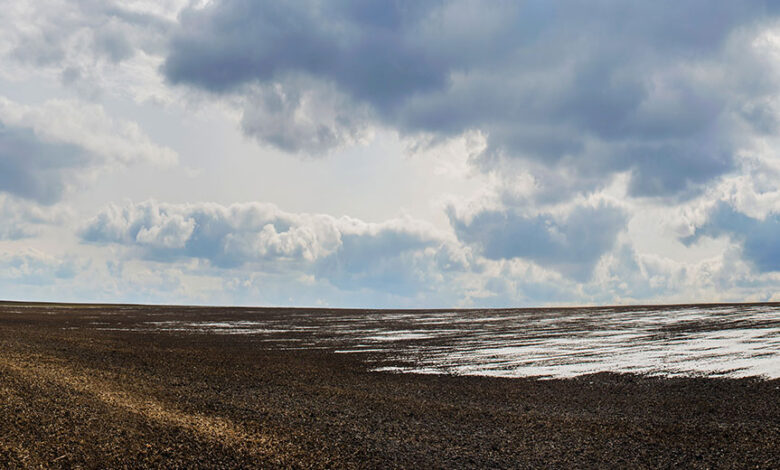
Farming With Weather Challenges
By Brittany Neumeier, A.Ag, Agri-Environmental Specialist, Outlook
Farming is a weather-reliant industry and extreme weather events pose significant challenges for producers. From drought conditions to mass rainfall events, the challenges of each year are unknown and vary. So how do you set up your operation to succeed in the face of such uncertainty? Risk management is an important practice for any sustainable operation. Risk management can be viewed as a strategy that uses various tools together to reduce the risk for your business. For instance, many operations invest in insurance or whole-farm revenue protection programs, income diversification and adequate operational reserves. Another tool producers can add to their strategy is the addition of operational buffers.
Operational buffers are on-farm practices that help absorb some of the risk associated with extreme weather events. Adding operational buffers is like having a shoulder on the highway. If you need to dodge a pothole, the extra room on the shoulder lets you do that without going into the ditch. With buffers, your operation doesn’t have the bear the full brunt of a major weather event, instead they give you a little wiggle room by absorbing some of the effects. These buffers protect your soil and available moisture, which may help with profitability when growing conditions are tough. They include wetlands, a variable landscape, treed areas and no-till soil.
Wetlands reduce flood damage that could be caused by a mass rainfall event. Wetlands act like a sponge, absorbing rainfall that may otherwise rush off your field, cutting into the ground and taking your topsoil with it. Wetlands also feed the local ground water. As water collects in these features it penetrates down through the soil, filling the ground reserves and increases the available soil moisture for plants when they need it.
Features like tree rows, bluffs and rolling hills all work to reduce wind speeds that may lay over your crop and blow your topsoil away. Tree rows and bluffs, in additional to trapping snow and other moisture, provide shade for the soil. This reduces the soil temperature and creates a small microclimate around it. When soil and plants stay cooler, they need less water and less soil water evaporation occurs.
No till soils that are covered with plant material maintain an ideal soil structure that sticks together in small clumps that are harder to move with wind or water. This soil structure also allows water to seep down through the soil and into the root zone rather than hitting the surface and running off, allowing your field to absorb more moisture during rain events.
When making decisions for your business it can be hard to determine which actions will have the greatest benefit. Alone, one risk management tool may not have a huge effect on your operation but when used together as part of a full strategy, each risk reduction action cumulates into what could be the difference between a profitable year or not.








































